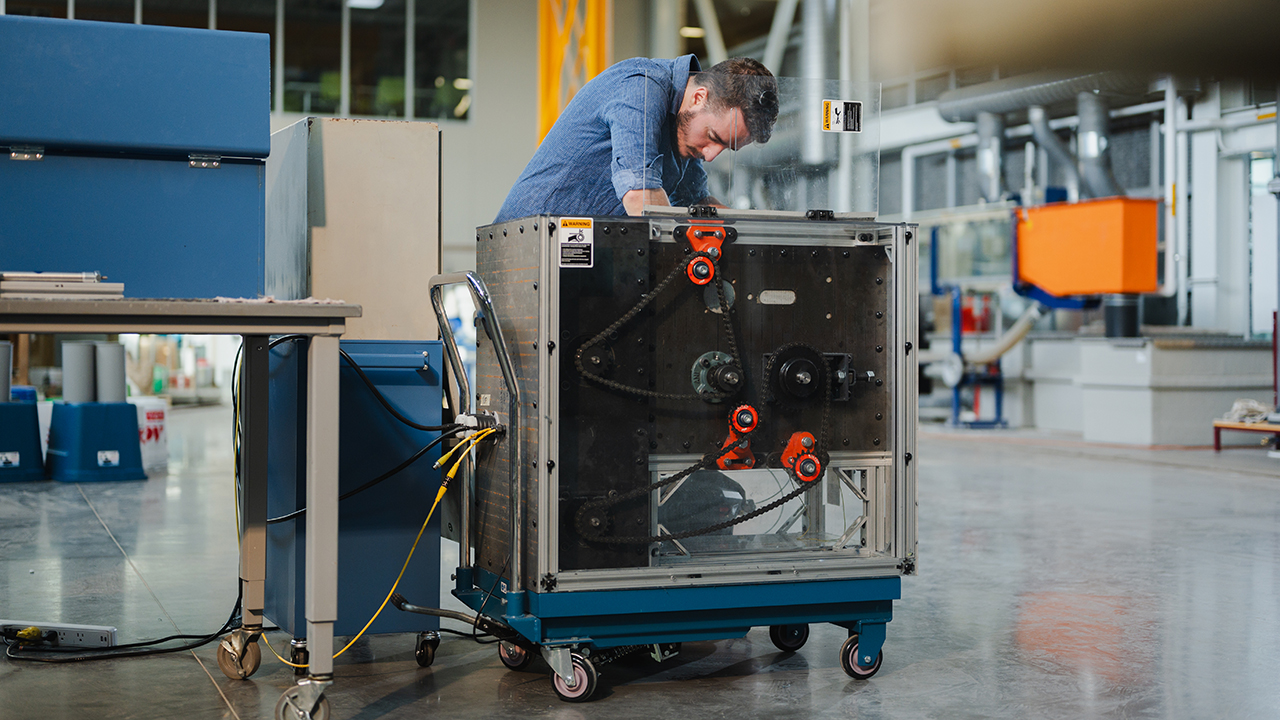
Paulo Alves works on the Fiber Shredder. Credit: University of Minnesota Duluth
Each year, only 15 percent of textile waste is recycled, leaving over 90 million tons of textiles to be discarded globally. To address this issue, Abbie Clarke-Sather, University of Minnesota Duluth researcher and associate professor of mechanical and industrial engineering and graduate student Paulo Alves have developed a new machine called the Fiber Shredder.
With a provisional patent, the Fiber Shredder takes existing textiles and shreds them back into fibers in 90 seconds. Unlike similar machines already on the market that cut fibers, the Fiber Shredder pulls fibers apart, which keeps them longer in length and makes it easier to respin them back into yarns for reuse. The Fiber Shredder is also versatile enough to handle many types of textile waste where existing processes may only handle one type of fabric material.
Clarke-Sather and Alves have recently started a small company and are looking for partners who want to make new products from recycled fibers while also working to scale up the Fiber Shredder to meet the needs of potential partners.
“It’s interesting to be both faculty and an entrepreneur at the same time. It makes me really excited to feel like I’m part of a broad coalition of people trying to make our world more sustainable,” said Clarke-Sather.
Technology Commercialization has been a key part of Clarke-Sather and Alves’ entrepreneurial journey, helping to connect them with resources, including potential funding and ways to think about how to commercialize the Fiber Shredder. Clarke-Sather also participated in the Jumpstart Technology Commercialization workshop through MIN-Corps. The workshop encouraged her to reach out to more potential collaborators and local organizations to assess their interest in and barriers to using recycled fibers in their own products and processes.